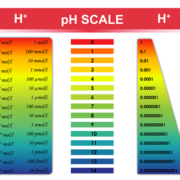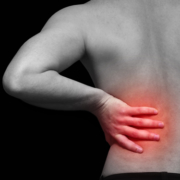What Chiropractic Patients Want To Know About Occipital Neuralgia
Many headaches that people classify as migraines are actually not migraines at all. Two of the most common headaches confused with migraines are sinus headaches and occipital neuralgia.
The condition can be debilitating but there are treatments, including chiropractic, that are very effective. Understanding occipital neuralgia can help patients better manage it so they can minimize the pain and symptoms of the condition.
What is occipital neuralgia?
Occipital neuralgia is a neurological condition that affects the occipital nerves which run from the top portion of the spinal cord, through the scalp, transmitting messages to and from the brain. There are two greater occipital nerves, one on each side of the head, from between the vertebrae located in the upper neck through the muscles that are located at the base of the skull and back of the head.
While they do not cover the areas on or near the ears or over the face, they can extend over the scalp as far as the forehead. When those nerves are injured or become inflamed, occipital neuralgia is the result. A person with this condition may experience pain at the base of their skull or the back of their head.
What are the symptoms of occipital neuralgia?
Pain is the prevalent symptom of occipital neuralgia. It often mimics the pain of migraine headaches or cluster headaches and is described as throbbing, burning, and aching.
There may also be intermittent shooting or shocking pain. Typically, the pain begins at the base of the skull but may radiate along the side of the scalp or in the back of the head. Other symptoms include:
- Pain is experienced on one side (but sometimes both sides)
- Pain behind the eye of the side that is affected
- Tenderness in the scalp
- Sensitivity to light
- Pain triggered by neck movement
What causes occipital neuralgia?
Irritation or pressure to the occipital nerves are what actually cause the pain. This may be due to tight muscles in the neck that squeeze or trap the nerves, injury, or inflammation.
However, much of the time doctors are unable to determine the cause. There are several medical conditions linked to occipital neuralgia:
- Tight neck muscles
- Diabetes
- Trauma or injury to the back of the head
- Gout
- Tension in the neck muscles
- Whiplash
- Inflammation of the blood vessels in and around the neck
- Infection
- Neck tumors
- Cervical disc disease
- Osteoarthritis
What are the treatments for occipital neuralgia?
Occipital neuralgia treatment focuses on pain relief. It often begins with conservative treatments that include:
- Rest
- Heat
- Physical therapy
- Anti-inflammatory over the counter medication
- Massage
- Chiropractic
In more severe cases the patient may be prescribed a stronger anti-inflammatory medication, muscle relaxants or in some cases an anticonvulsant medication.
If these therapies are not effective or do not bring about the desired level of pain relief, then doctors may recommend percutaneous nerve blocks and steroids. Sometimes surgery is recommended in cases where the pain is severe, chronic, and is unresponsive to more conservative treatments.
Chiropractic for occipital neuralgia
Chiropractic was once considered an “alternative” treatment for occipital neuralgia, but now it is often a regular part of recommended patient care. The advantage of chiropractic over medication or surgery is that chiropractic does not come with the side effects of drugs or the risks of surgery.
Another advantage is that chiropractic seeks to correct the root of the problem, not just manage the pain like other treatments.
Chiropractic treatment for occipital neuralgia may include lift adjustments, heat, massage, and traction. This will bring the body back into proper alignment and take the pressure off of the nerves as it loosens the neck muscles.
The patient stands a better chance of staying pain free when taking this treatment route.
Give us a call to schedule your appointment with one of our highly skilled chiropractors! (780)455-2112 or visit www.ocwc.ca for more health information and tips!









